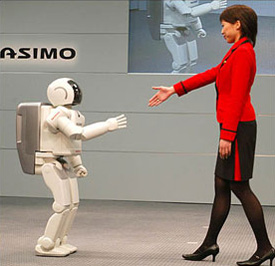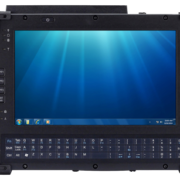December Update If you are not reading The Robot Report (and you should be; it’s one of the best things on the web about the robotic industry), you may have missed their article about the Fukushima Daiichi disaster. Much of what it says will not be news to the readers of this blog, but one paragraph caught my attention:
“In the case of Fukushima, both iRobot and QinetiQ, companies that volunteered equipment to Tepco, instructors found that senior Tepco employees were chosen to be trained to operate the American and British robots yet they were less suited to the task than the 20-year olds who had gamer experience. The remote-controlled PackBot and Talon robots and the RC Bobcat tractors, all used gaming consoles to operate their devices and the senior employees were slow to learn. In a recent Webinar on the issue by Robotic Trends, the trainers found that 20-year olds learned in less than a day while it took the older Tepco employees many days to gain the same level of competence.”
With the recent rapid growth of unmanned systems, there has been much speculation about the disruptive effects of their wide-spread adoption. A commonly-held view is that low-skilled workers will be displaced, while an educated elite (presumably people who make robots) will continue to thrive.
The above story suggests that the robotic revolution may actually increase the value of previously underrated skills. The Army has deliberately sought the exploit the recreational skills of the younger generation, by making the controls of unmanned systems similar to those of gaming consoles. Indeed, some claim that the best UAV pilots are youngsters who have spent their time playing video games, not those who are heavily schooled. The decades-old controversy of “Must pilots be officers?” has been reframed as “Can enlisted men operate UAVs?” (See Navy Times and Army Times for related articles).
Just goes to show how unpredictable the future can be. Maybe our children will be yelling at their kids, “Stop wasting your time studying, and go back to playing those video games!”
The most detailed description of the use of robots at the crippled plant is at IEEE Spectrum. This article features a Japanese robot operator’s blog, which has mysteriously disappeared. The good folks at IEEE did a public service by posting a translation.
Reading the operator’s blog is like reading a soldier’s combat diary. Periods of boredom are punctuated with bouts of terror (the operator is told by his supervisor to ignore his dosimeter alarm). The operator is confused by his orders and complains of stress, isolation, and migraines. There are even a few moments of whimsy; I especially liked the picture of a hazmat-suited man riding a iRobot’s Warrior UGV.
What makes this blog valuable is the wealth of technical details. For example, there is an intresting comparison of the Japanese Quince and the Packbot robots. Clearly, these blog postings will be data mined for years. BTW, there’s a photo of a bunch of guys in hazmat suits crowded around an AMREL laptop, being used as an Operator Control Unit (OCU).
The Japanese operator reports on a creative use of iRobot’s Warrior UGV at the crippled reactors. An industrial vacuum cleaner was attached, so it could clean-up radioactive debris. In a separate posting, IEEE Spectrum could not resist from making the obvious joke and quipped, “It seems iRobot should have sent some Roomba vacuuming bots as well.”
Video of the Warrior cleaning the reactor below:
April Update iRobot sent Unmanned Ground Vehicles to help out at the reactor. Check out the video.
Original blog posting While the whole world has been watching the nuclear disaster in Japan, one question keeps reoccurring: Where are the robots? The crisis in the Fukushima Daiichi power plant meets at least two of the three requirements for the use of robots as outlined by the famous dictum, “dirty, dull, and dangerous.” The Japanese are well known for their technological prowess and their enthusiasm for all things robotic. They are using a Snakebot to search for survivors amid the urban debris left by the tsunami. Why aren’t we seeing images of plucky, little Unmanned Ground Vehicles (UGV) charging into highly radioactive areas?
the three requirements for the use of robots as outlined by the famous dictum, “dirty, dull, and dangerous.” The Japanese are well known for their technological prowess and their enthusiasm for all things robotic. They are using a Snakebot to search for survivors amid the urban debris left by the tsunami. Why aren’t we seeing images of plucky, little Unmanned Ground Vehicles (UGV) charging into highly radioactive areas?
For such a thoroughly covered story, there have been a surprisingly wide variety of answers. Some of the reasons given may have implications for the civilian adoption of the UGV technology. Here is a brief summary of the myriad media speculations:
1) Japanese have a cultural bias against robots doing certain types of work. Originally appearing in a Reuters report, this idea has been widely circulated. It is usually illustrated by an anecdote about human operators still working elevators, a phenomenon easily observed by foreign reporters who never leave their hotels. This idea fails to explain why the Japanese military do not suffer this prejudice. According to IEEE Spectrum, they’ve asked to borrow a PackBot 510 and a Warrior 710 from iRobot for use at the crippled plant (BTW, AMREL makes the Operator Control Units for the PackBots deployed in Iraq and Afghanistan).
2) The Fukushima Daiichi power plant is too old to be “robot capable.” Designed in 1970s, it was simply not built with robots in mind. This idea sounds plausible, but I’m a little suspicious of it. Robots were used in the clean-up of Three Mile Island and Chernobyl, both built in the age of primitive robots. If robots are not useful, why did the Japanese military ask to borrow them from iRobot?
3) The Japanese were so confident of the safety of their power plants that they thought emergency clean-up robots were unnecessary. CNET reported that the plant’s owners, Tokyo Electric Power Company (Tepco), “….never imagined a situation in which the main and backup power to the coastal plant would be knocked out.” Prof. Satoshi Tadokoro, director the International Rescue Systems Institute wrote in Center for Robot-Assisted Search and Rescue (CRASAR) website that “Power plant companies mentioned that they did not need such robots because their nuclear plants never have accidents and are safe.” However, the idea that Japanese didn’t develop robots for use in nuclear accidents doesn’t completely hold up, because…
4) The Japanese did develop robots for use in nuclear accidents. CNET reports that after an accident in 1999, when two workers died from radiation, Japan spent millions developing robots to deal with nuclear leaks. CNET speculates that we haven’t seen them, because they were a “shelved prototype.” Just to make this situation even more perplexing…
5) The Japanese are using robots. Both IEEE Spectrum and DVICE report that the Japanese are using a radiation-monitoring robot that sounds like the “shelved prototype” described by CNET. This is a little confusing, because when as spokesman for Tepco was asked about the use of robots at the plant site, he replied, “I don’t know that we have any such devices” (source: Reuters). Perhaps, this apparent contradiction occurred, because this robot wasn’t deployed until 7 days after the disaster began.
So, at least one UGV is being utilized. Clearly this is too little and too late. Why aren’t there more? Why didn’t Japan follow through on its commitment to field a fleet of unmanned systems that could actually fix things, and not just monitor radiation?
The best explanation that I have seen so far is the one given by Dr. Robin Murphy on the CRASAR website: money. Commenting on Prof. Tadokoro remarks, she writes, “Emergencies are outside the normal so it’s hard to speed money in anticipation of them, hard to save for that rainy day.” Echoing this sentiment is William Slaeton, who wrote in Slate, “Power companies want cheap robots that can replace workers and are always useful. They don’t want robots expensively equipped to handle unlikely nightmare scenarios.” Slaeton contrasts this with the French who have built a fleet of robots for the purpose of dealing with nuclear accidents.
The Japanese attitude reminds me of the military’s mind-set about unmanned systems. They didn’t build many robots until the current wars absolutely forced them to do so. The problem with this viewpoint is that by the time you absolutely know that you need robots in a nuclear disaster, it’s too late.
In the wake of the partial melt-down at the Japanese plant, virtually every country in the world is evaluating their nuclear program. This is the perfect time for the unmanned systems community to speak up about the need for robots that can assist in “unlikely nightmare scenarios.” The Japanese have suffered a horrible disaster. It would be another disaster not to learn from their mistakes.







Here are two other alternatives: Semiconductors including digital camera chips are not immune to gamma radiation and often in unshielded designs have relatively short lives. Past robotic designs used fewer semiconductors and were thus less susceptible to radiation damage. So robots may NOT be used because they become too quickly blind or disabled by degradation of the semiconductors. Also many robot systems have become tele-operated and thus more susceptible to radio frequency interference (very prevalent in damaged nuclear power plants) than previous designs which were tethered by control cables. A robot with communication control problems cannot be relied upon to execute critical tasks.
Building a robot to operate in a highly radioactive environment is not easy. The Center for Robot-Assisted Search and Rescue (CRASAR) describes some of the challenges in blog post: http://crasar.org/2011/03/17/from-quake-to-nuclear-disaster-different-problems-different-robots/
However, “not easy” is not the same as impossible. The same blog (http://crasar.org/2011/03/17/word-from-japan-on-robots-and-fukushima/) quotes Prof. Satoshi Tadokoro, as saying, “Many robots were developed after this incident, but they did not continued.” (“incident” refers to an earlier Japanese nuclear accident in which 2 workers were killed)
William Saletan writing for Slate (http://www.slate.com/id/2288886/pagenum/2) states: “Two years after Chernobyl, French nuclear operators created Group Intra, a consortium charged with maintaining a fleet of robots for use in major nuclear accidents.”
On the other hand, Dr. Robin Murphy wrote in CRASAR (http://crasar.org/2011/03/18/reuters-slams-japan-for-lack-of-nuclear-disaster-robots/ ) that “…no country has robots (or at least barely plural) for nuclear disasters- denial and spending the necessary R&D money for this very, very hard type of robot is not unique to the Japanese, the US is in similar shape.”
Note that while Dr. Murphy’s comments apparently do not support Saletan’s contention about the French, she lists denial and money as the roadblocks, not the very real, very difficult technological challenges.